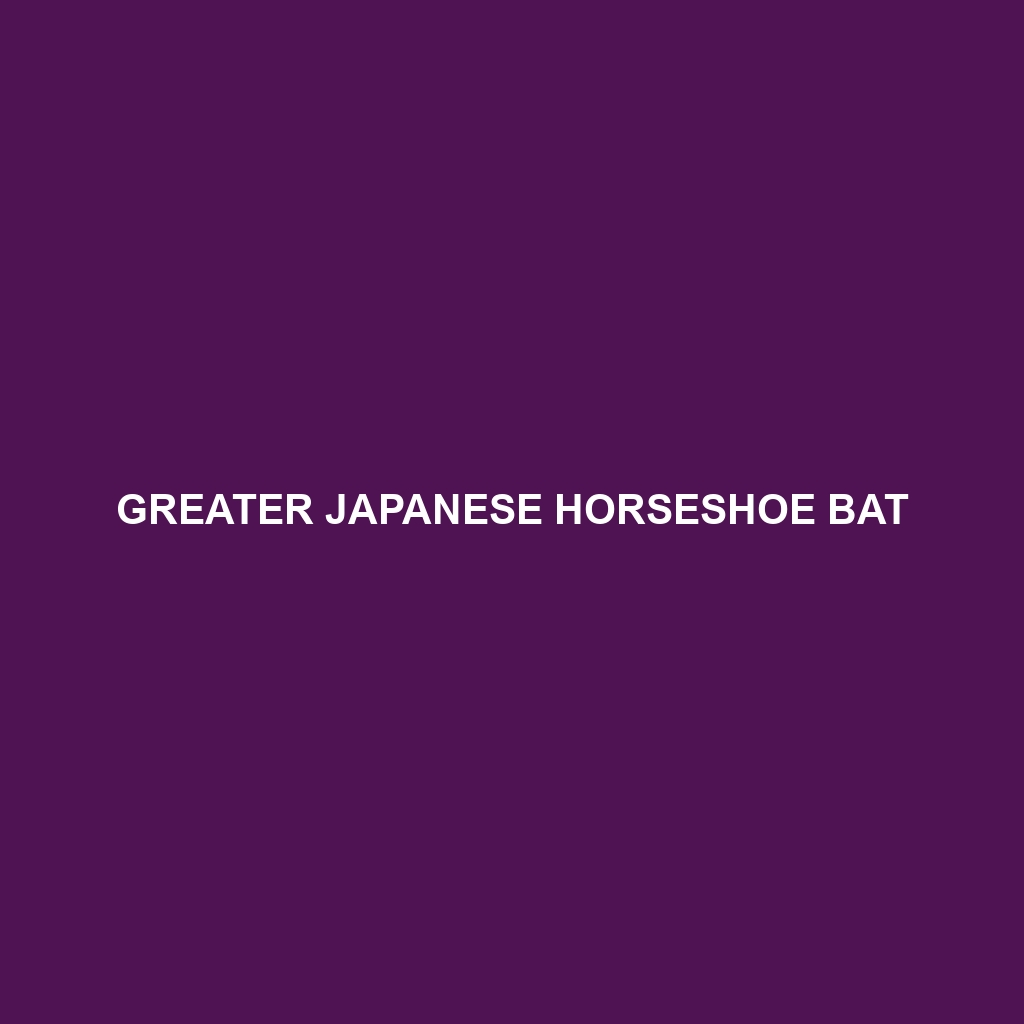Anamban Horseshoe Bat: A Species Overview
Common Name: Anamban Horseshoe Bat
Scientific Name: Rhinolophus anambae
Habitat
The Anamban Horseshoe Bat is primarily found in Southeast Asia, particularly in the tropical and subtropical forests of Indonesia, Malaysia, and the Philippines. This species prefers humid, densely vegetated areas, which provide essential roosting sites and food resources. It is often discovered in caves, hollow trees, and buildings that offer stable temperatures and humidity levels crucial for its survival.
Physical Characteristics
The Anamban Horseshoe Bat is a medium-sized bat with a wingspan of approximately 30 to 35 centimeters. Its fur is typically a rich brown color, with a lighter underbelly. Distinctively, it features a horseshoe-shaped noseleaf, which aids in echolocation, enabling efficient hunting in low-light conditions. The bat’s ears are medium in size and relatively pointed, contributing to its acute sense of hearing.
Behavior
This species exhibits nocturnal behavior, actively foraging for food at dusk and during the night. The Anamban Horseshoe Bat is known for its unique roosting behavior, often seen hanging upside down in colonies. They utilize echolocation to navigate and locate prey, showcasing remarkable agility and precision in flight. Social interactions within colonies include vocalizations and grooming behaviors.
Diet
The Anamban Horseshoe Bat primarily feeds on moths, beetles, and other flying insects. Its diet plays a critical role in controlling insect populations, contributing to a balanced ecosystem. The bat employs echolocation to hunt, capturing its prey mid-flight. Its feeding habits are essential for understanding the species’ ecological role and interaction with its habitat.
Reproduction
Breeding typically occurs during the rainy season, with female Anamban Horseshoe Bats giving birth to a single pup each year. Maternity roosts are established in secluded areas to provide safety for the young. The young bats rely on their mothers for nourishment and learn essential survival skills during the first few months of life.
Conservation Status
The Anamban Horseshoe Bat is currently classified as “Vulnerable” by the International Union for Conservation of Nature (IUCN). Threats to its habitat include deforestation, mining activities, and disturbances in roosting sites, all contributing to population decline. Conservation efforts are crucial to ensure the survival of this unique bat species.
Interesting Facts
One fascinating aspect of the Anamban Horseshoe Bat is its unique echolocation calls, which are among the highest frequency sounds made by any bat. This allows it to detect even the faintest echoes from its surroundings. Additionally, this species is believed to have a relatively long lifespan, often living up to ten years in the wild.
Role in Ecosystem
The Anamban Horseshoe Bat plays a vital role in its ecosystem as a pollinator and pest controller. Through its feeding habits, it helps maintain insect populations, which can otherwise explode in numbers. By contributing to pest control, this species supports agricultural practices and promotes biodiversity within its habitat, emphasizing its importance in maintaining ecological balance.
